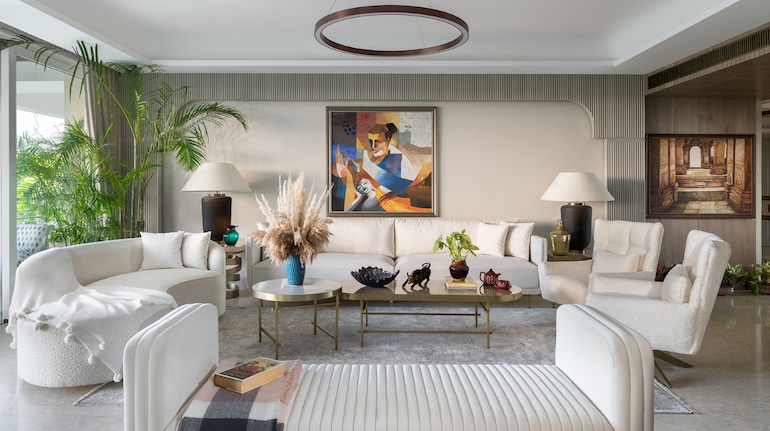
Home decor tips: Darker colours on the ceiling can visually lower it, creating a more intimate feel. On the other hand, lighter colours on the ceiling can make a room feel taller and airier (Image: Nivasa)
Colours can transform how you feel and see things. Reds and oranges bring warmth and energy, while blues offer peace. “As an interior designer, I see colours as emotional triggers, like music without words,” says Interior Design Content Creator Mohammd Salman, Co-founder of Tint Tone and Shades Interiors.
“Each hue affects us differently, stimulating appetite in yellows and promoting relaxation in blues. Alongside, colours also impact how we perceive space. Lighter shades make rooms seem bigger, while darker ones create coziness,” he adds.
Colours not only influence your mood but also shape your perception of space in surprising ways. Salman shares 7 key methods to redesign your home:
Size perception: Lighter colours, like whites and pastels, create an illusion of spaciousness and airiness. This makes them ideal for smaller rooms. On the other hand, dark colours, like dark blue or black, can make a large room feel smaller.
Temperature perception: Warm colours evoke a sense of warmth, while cool hues create a perception of coolness. This can be helpful in balancing the actual temperature of a space. For example, a south-facing room bathed in sunlight might benefit from cool hues to create a sense of balance.
Weight perception: Lighter colours appear to recede, making objects seem lighter. Darker colours are visually advance and make objects appear heavier.
Ceiling height: Darker colours on the ceiling can visually lower it, creating a more intimate feel. On the other hand, lighter colours on the ceiling can make a room feel taller and airier.
Highlighting architectural features: Colour can be used to draw attention to specific architectural elements. For instance, painting a recessed alcove a contrasting colour can make it stand out.
Story continues below Advertisement
Appetite and cravings: Colour psychology even extends to influencing your appetite and cravings. Colours like red and orange are known to stimulate the appetite, which is why many restaurants use these colours in their branding and decor. Cool colours, on the other hand, can suppress appetite.
The influence of personal preference: Your individual experience and cultural background can shape your preference for certain colours. These preferences can further influence how you perceive colours in an interior space. A childhood spent near a calming blue ocean might make you favour cool blue tones in your abode, whereas if you were raised in a vibrant city landscape, you might gravitate towards stimulating reds and oranges.
